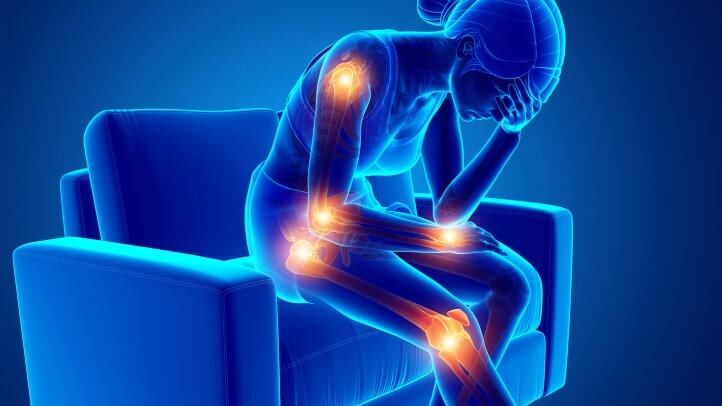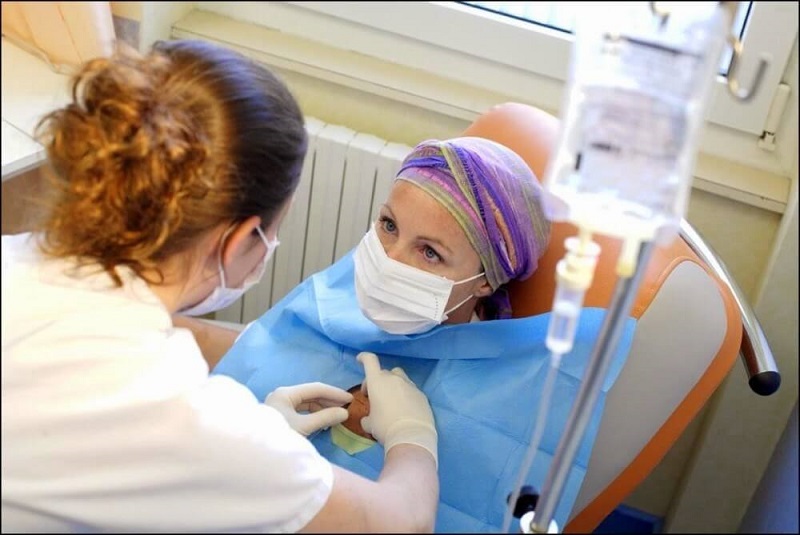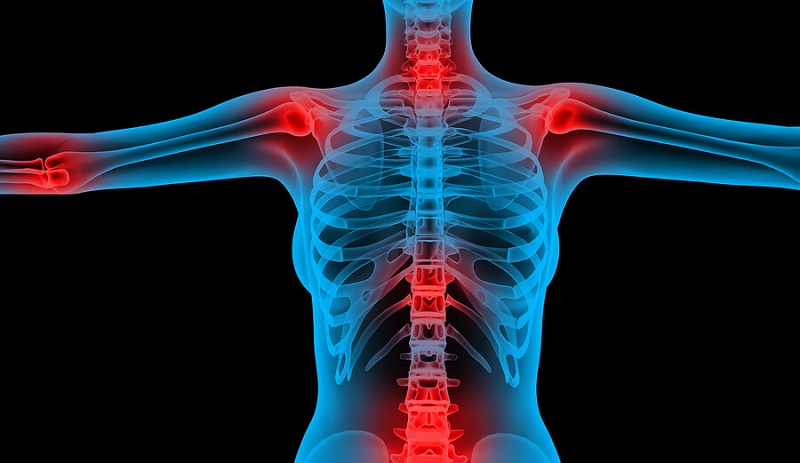Today the rate of patients with this bone cancer is increasing, so even if this is a rare disease we should not be subjective.
Bone cancer is a disease that progresses quietly until the disease progresses to a serious stage with clear signs, the fracture, bone pain begins to become difficult to control.
Understanding bone cancer, its causes, its signs, and its treatment is useful information to be aware of.
What Is Bone Cancer?
The adult human body is composed of 206 bones of different shapes, sizes, and functions. Inside bones are living cells linked together by hard matter similar to calcium. The bone is characterized by a hard exterior but the hollow interior contains a spinal cord, which is responsible for the production of blood cells.
What is bone cancer? Bone cancer is known as 3-cell-linked cancer (sarcoma) made up of bone connective tissue cells, bone-forming cells, and cartilage-forming cells.

Cancer occurs when a malignant tumor is formed inside the bone. These tumors have very strong development properties, will compete with healthy bone tissue causing compression of the musculoskeletal system and surrounding tissues, affecting the health and threatening the patient’s life.
Bone cancer is usually found in such places as the femur, tibial plateau, head below the spine, the head above the arm bone (near the knee – far from the elbow).
Bone cancer can be either primary or secondary (metastatic to other parts of the body). But most of the current cancers are in the secondary cancer group, which manifest clearly in the late stage, very few cases are secondary cancers.
How Many Types of Bone Cancer?
Currently, bone cancer is classified into three main categories as follows:
- Osteosarcoma: This type of cancer that usually occurs in bone-shaped tissue, is known to be tissue with an almost similar structure to the bone, but the difference is that it has fewer minerals than bones. For osteosarcoma, the most common position is the arm and knee.
-
Cartilage sarcoma: Cancer occurs in cartilage tissue, can appear in most places in the body such as the thighs, shoulders, pelvis, etc

Family-related cancer Ewing Sarcoma (ESFTs): This type of cancer usually occurs in soft tissues (adipose tissue, fibrous tissue, muscle, other support tissue, or blood vessels) or is present in bone. ESFTs are usually found in the spine, arm, leg, and also in pelvis.
Causes of Bone Cancer
For primary cancer, to date the exact cause has not been found, all are only factors that increase the risk of the disease. For people with Paget’s bone disease, this is an injury caused by abnormally growing new bone cells that increase the risk of bone cancer.
In addition, genetic disorders associated with genetic mutations in cell division are also one of the main causes of bone cancer. Common in children in the age of bone development between 12 and 20 years old.

Some other causes that increase the risk of bone cancer include:
Exposure to ionizing radiation: People who are frequently exposed to ionizing radiation for a long time will increase the risk of cell changes leading to bone cancer, often in toxic chemical environments or in humans. radiotherapy.
- Injury: When trauma with strong impact force affects bones, especially femur, tibial plateau progresses to chronic also increases the risk of bone cancer.
- People with P53 cancer inhibition gene disorder are also at high risk of bone cancer.
Signs of Bone Cancer
Bone cancer progresses in 3 degrees with significantly different manifestations gradually increasing.
Especially for young children, the signs of bone cancer in children in the early stages are difficult to detect with quite vague symptoms, babies can not pay attention and notify their parents, even adults often. skip this stage.
Until the symptoms are clearer than the patient, it is easy to see but also means the disease progresses.
How to recognize bone cancer through the following signs you should pay attention to is:
Pain: The first sign you may feel is pain. The pain in the early stages is only mild, too suddenly. Until the illness worsens, the pain appears dense, and the sensation of pain increases. Pain often occurs at night, affecting sleep quality. However, this pain is very vague with no exact location.
Swollen, lumpy: When the tumor forms, touch the bones with your hands, you will feel the deformed bones in your hands. When bone tissue was protruding, seeing the abnormally concave surface also indicated the severity of the disease. The lumpy area is usually dark in color and feels warmer than the healed area, accompanied by pain and irritation.
Bone dysfunction: Along with pain is affected by bone function, which can cause muscle atrophy.
Body deformity: When the tumor grows quickly, it will cause deformed deformity, observed the lower extremities have abnormal changes.
Pinched symptoms: If there is a tumor in the nasal cavity or skull, it will compress the brain and nose, causing brain pressure to increase, making the brain sluggish and breathing problems appear. If the tumor in the pelvis will cause the rectum, bladder to squeeze, causing difficulty urinating, painful urination, where the spinal cord compresses the spine will increase the risk of making the spine paralyzed.
Fatigue: The pain appears making it difficult for the patient to sleep, the person is tired, has anorexia, and weight loss. This is also the most recognizable sign of bone cancer in children, parents should pay attention to the baby’s abnormal manifestations.
In addition, when entering the final stage, the high amount of calcium in the blood will make people tired, nauseous, dizzy, and rapid weight loss. Or can also cause difficulty breathing, cough, jaundice … if the tumor has metastasized.
Stages of Bone Cancer

The prognosis of bone cancer depends on many factors such as the type of cancer, the location, the extent, and the rate of growth of the cancer cells.
According to some statistics, for bone cancer patients, most cases have a life time of more than 5 years if detected early and treated actively.
Statistics on the survival rate> 5 years corresponding to the stages of bone cancer are as follows:
Stage 1: Bone cancer only develops in the bone, has not spread to other areas. The survival rate> 5 years is 80%.
Stage 2: Bone cancer only limited development in the bone, at this stage still has a good prognosis, survival rate> 5 is 70%.
Stage 3: Bone cancer appears more in 2 different positions on the same bone, spread to the surface of the bone but has not yet invaded another organ. The survival rate of> 5 years is 60%.
Stage 4: For end-stage bone cancer is the most dangerous. Bone cancer has begun to spread from the bones to the lymph nodes, and to other organs. The survival rate of> 5 years is between 20 and 50%.
Thus, the best way is that we should take measures to prevent bone cancer early by having a reasonable diet and living. Take measures to protect yourself from the sun to limit the effects of UV rays and polluted environments. Don’t use stimulants, and keep your mind relaxed and balanced, not over-pressured.
For people in the high-risk groups, families with people with bone cancer, often working in toxic environments, having abnormal signs of the body suspected to be related to bone cancer, should quickly go to the cancer specialist hospital for early bone cancer screening to eliminate the risk factors or detect the disease at an early stage, to prevent dangerous complications from occurring in time.
If you are interested in a screening method for bone cancer, need more information, please contact hotline: 19001717 – Diag – Medical Diagnostic Center for specific advice and appointment.
Diagnosis of Bone Cancer
When suspecting that the patient has bone cancer, through physical examination, the doctor will appoint the patient to perform some bone cancer tests to help confirm the diagnosis of the disease such as:
- X-ray: Through images to help doctors determine the initial location and development of cancer.
- CT scan, MRI: This method provides detailed images of the bones to more accurately diagnose the disease condition.
- Bone scan: Scan bone with isotopes helps to detect cancer cells when x-rays do not detect them. The radioactivity in this method is at an acceptable level, so patients do not need to worry about health problems.
- Puncture biopsy: A sample of cells is taken from the patient’s body and tested to help the doctor know if the tumor is benign or malignant.
- Open biopsy: This method will use a scalpel to sample tissue from a tumor in the patient’s body for testing.
Treatment of Bone Cancer
The current treatments for bone cancer will be based on each specific case, mainly the following methods:
Surgery
The first priority method is surgery to help remove the tumor root, radicalize it. When a patient has bone cancer, surgery not only removes the tumor but also healing tissues around it because the disease is at risk of relapsing in locations close to the original site.
For sites that cannot be completely surgically removed, amputation is the best method considered by a doctor.
Chemotherapy
This is a treatment that aims to kill cancerous cells that are in the dividing stage. The patient can take the drug orally or intravenously. This method is often used in conjunction with other methods to help the bone cancer treatment process highly effective.

Chemotherapy also has the ability to help the tumor shrink to support surgical methods or to apply in the case of destroying cancer cells left after surgery.
Radiotherapy
Radiation therapy is a method of using high-energy radiation to target cancer cells to damage and stop their growth. The duration of radiation therapy is relatively many times a week to conduct about 5 this and lasts for about 5-8 weeks.
Hopefully, this article has helped you recognize the typical signs of bone cancer. When there are signs of doubt, you should go to the hospital for early examination and treatment.
In addition, it is necessary to prevent risk factors by having regular health check-ups, cancer screening, and keeping your lifestyle habits, a scientific and healthy diet, and limit your exposure to Hazardous Environments.
The site cannot and does not contain medical advice. The medical information is provided for general informational and educational purposes only and is not a substitute for professional advice. Accordingly, before taking any actions based upon such information, we encourage you to consult with the appropriate professionals.

 1900 1717
1900 1717 
